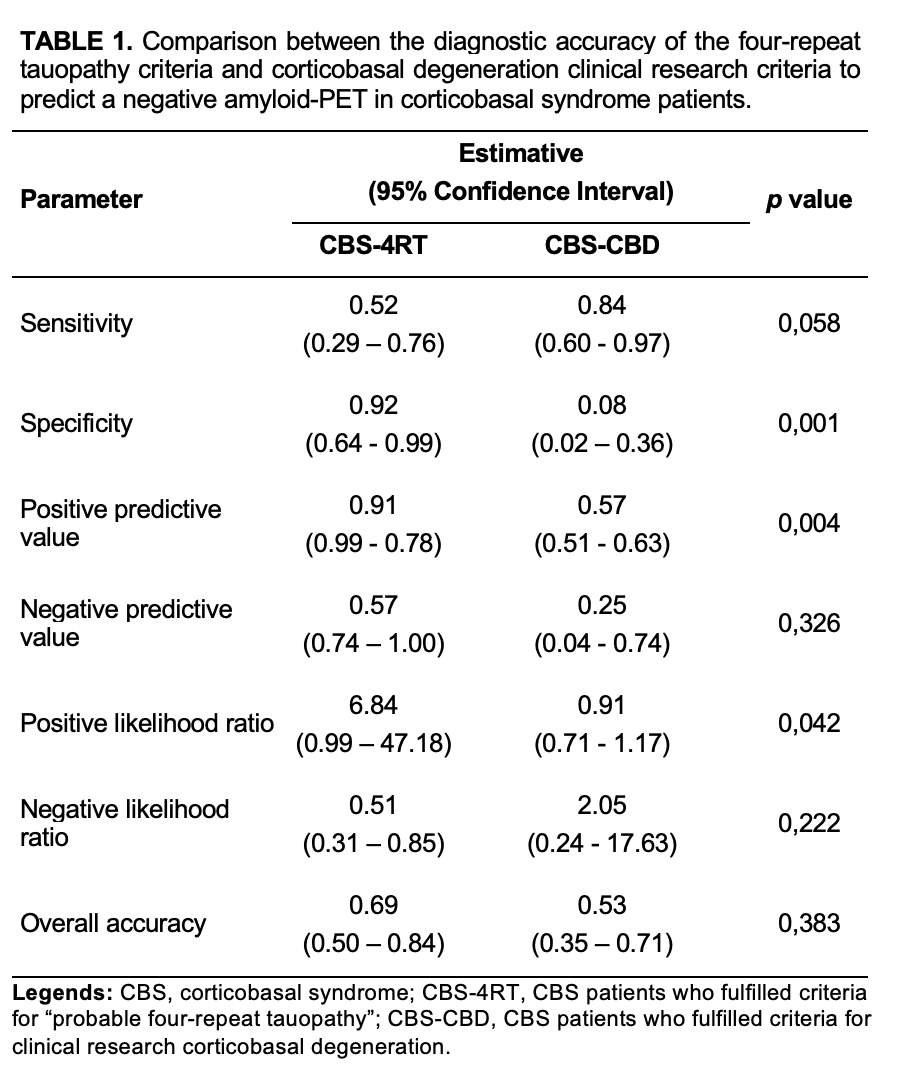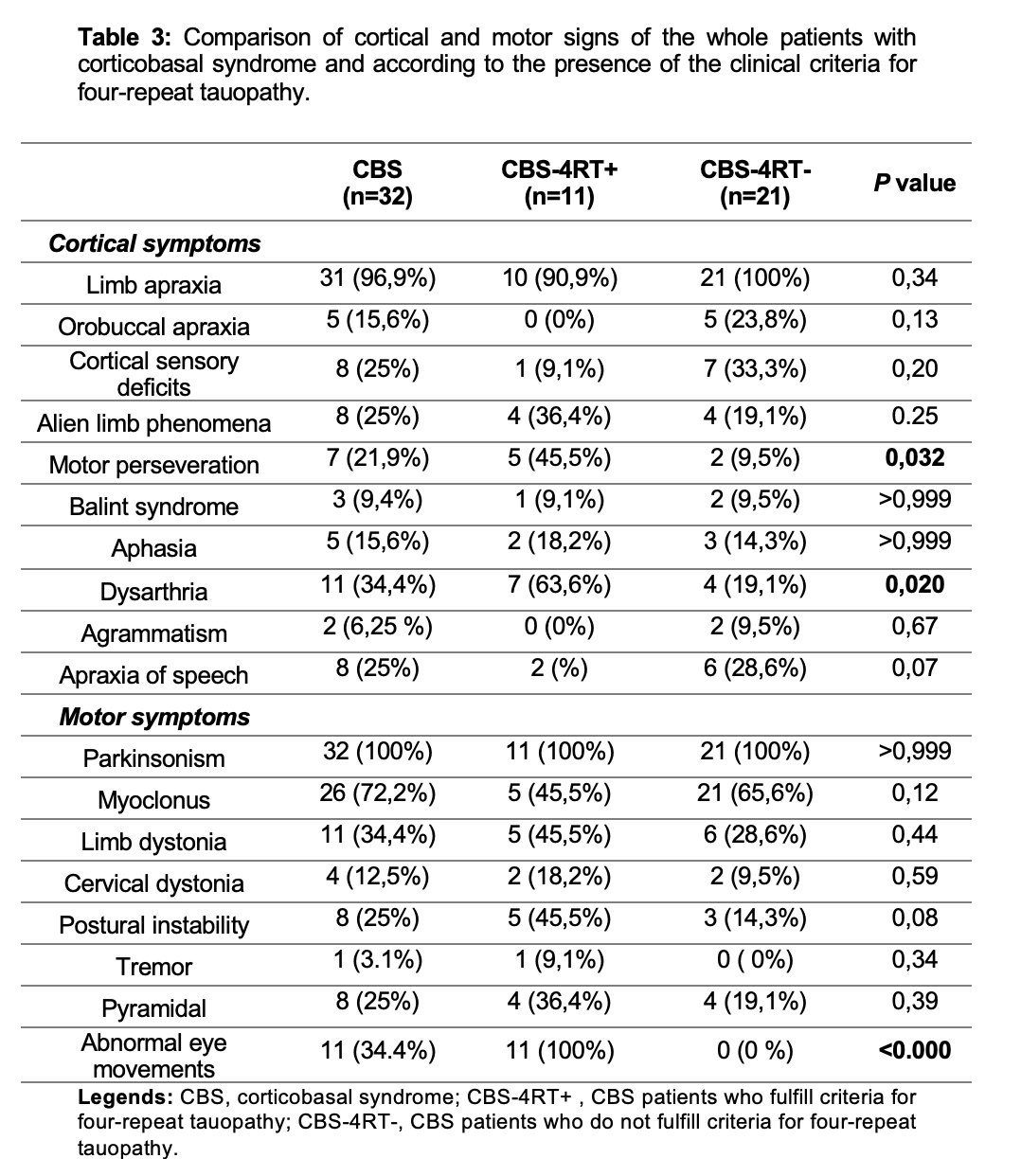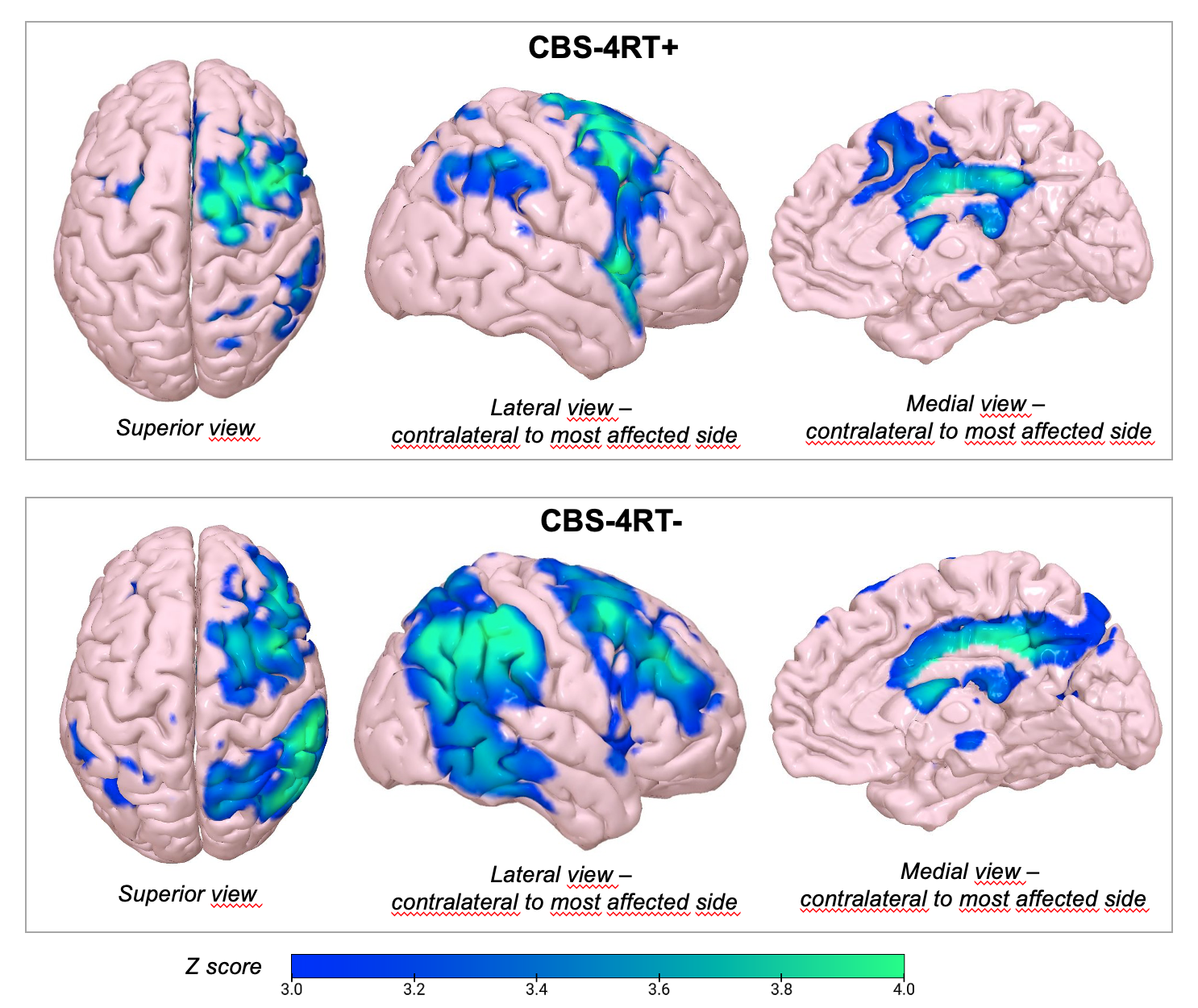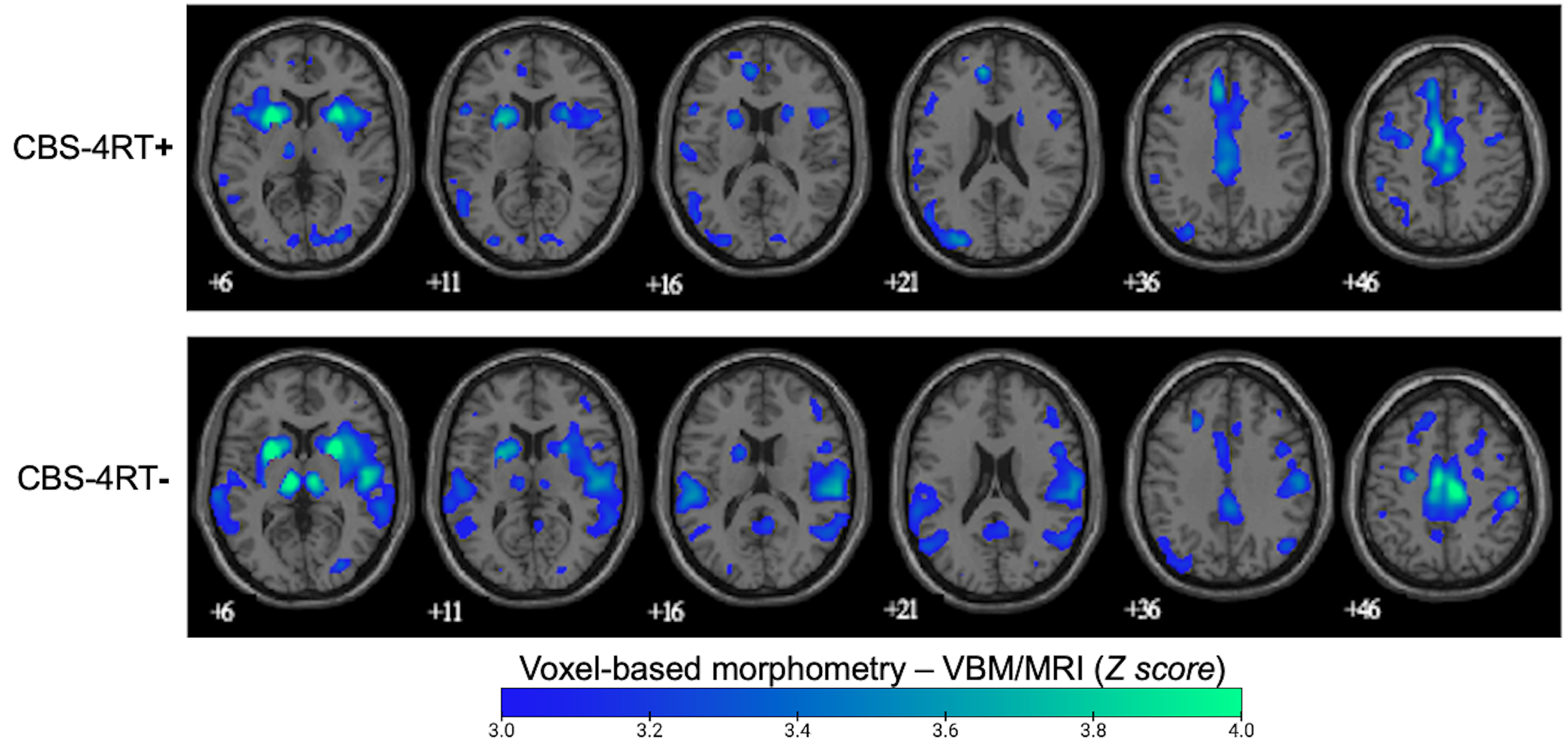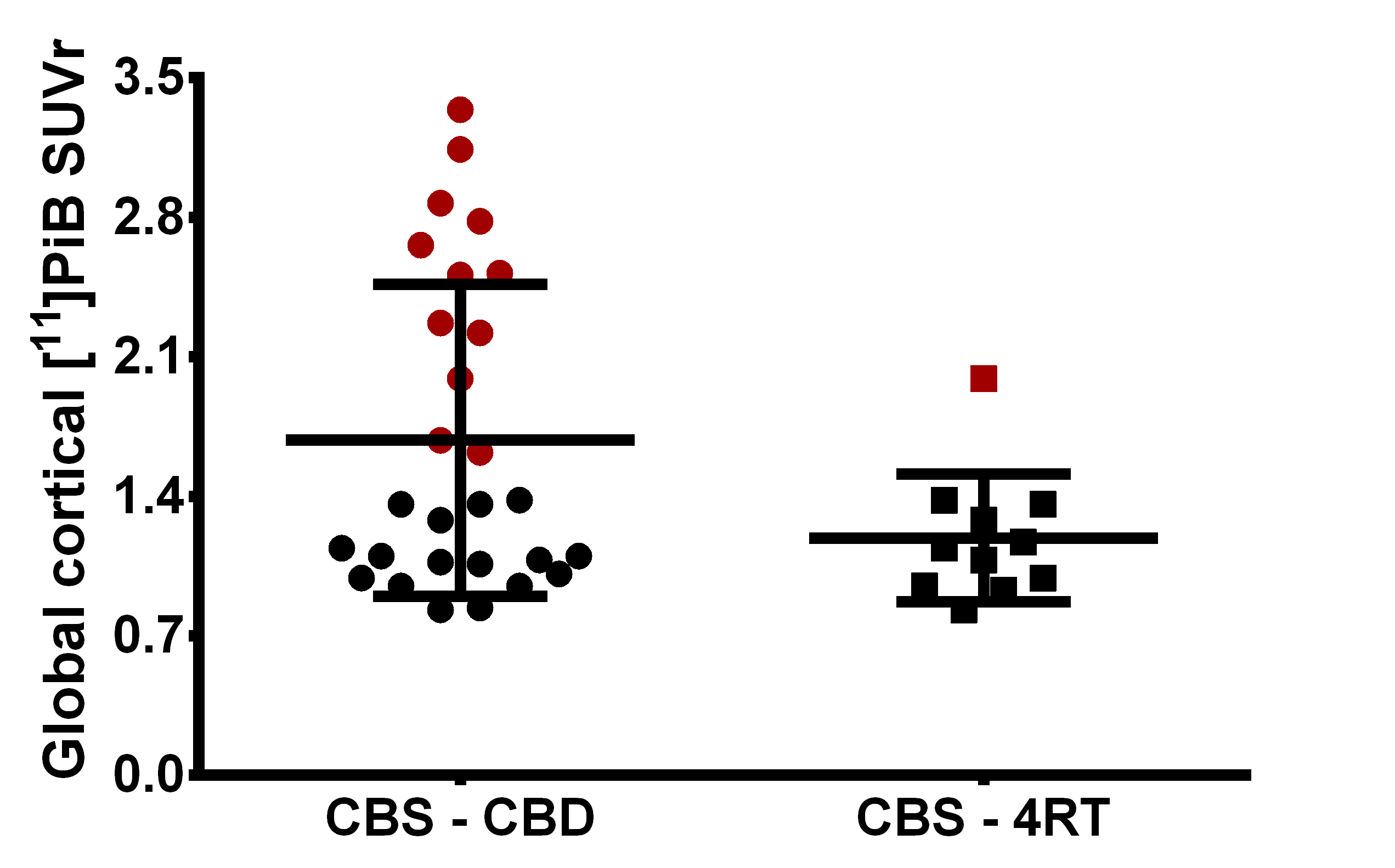Category: Parkinsonism, Atypical: PSP, CBD
Objective: To compare the “probable four-repeat (4R)-tauopathy” criteria[1] with the clinical research(cr) criteria for corticobasal degeneration (CBD) [2] regarding diagnostic accuracy to predict a negative amyloid-PET in corticobasal syndrome (CBS) patients. Also, to explore the CBS 4R-tauopathy group concerning clinical features, brain atrophy and metabolic patterns.
Background: CBS is a neurodegenerative disease related to multiple underlying pathologies, including the 4R-tauopathies. The MDS criteria for progressive supranuclear palsy (PSP) [1] proposed a diagnostic category, “probable 4R-tauopathy,” to address the overlap between PSP and CBD. These criteria were highly specific in a previous postmortem study[3].
Method: Thirty-two patients with probable CBS were prospectively evaluated and split into those who fulfilled (CBS-4RT+) or not (CBS-4RT-) the criteria for 4R-tauopathy . They underwent [18F]fluorodeoxyglucose(FDG) and [11C]Pittsburgh Compound-B(PIB) positron emission tomography (PET) on a hybrid PET/MRI to assess metabolism and amyloid status. We applied the cr-CBD criteria and compared cortical amyloid deposition between CBS-4RT+ and CBS-CBD groups. Quantitative group analyses were performed with SPM12 compared to a healthy age-matched control group.
Results: Eleven CBS patients were classified as CBS-4RT+, while 28 among 32 patients fulfilled criteria for cr-CBD. One patient out of 11 classified as CBS-4RT+ was positive at PIB-PET, compared to 12 among 28 CBS-CBD subjects. The CBS-4RT+ classification had 92% specificity, 52% sensitivity, and 69% accuracy compared to 8% specificity, 84% sensitivity, and 53% accuracy from cr-CBD criteria in predicting a negative PIB-PET (Table 1). CBS-4RT+ presented more often dysarthria (p=0,020) and motor perseveration (p=0,032) (table 3). Moreover, compared to controls, CBS-4RT+ patients showed asymmetric hypometabolism in the inferior and middle frontal gyri, prefrontal cortex, supplementary motor area, and striatum (figure 1). They also displayed brain atrophy in the inferior frontal gyrus, anterior cingulate, and striatum (figure 2).
Conclusion: The novel diagnostic category “probable 4R-tauopathy” showed better specificity than the cr-CBD criteria to predict a negative amyloid-PET in CBS. CBS-4RT+ patients presented with specific metabolic and volumetric patterns, and distinct clinical aspects previously related to tauopathies.
References: 1. Höglinger GU, Respondek G, Stamelou M, Kurz C, Josephs KA, Lang AE, et al. Clinical diagnosis of progressive supranuclear palsy: The movement disorder society criteria. Mov Disord. 2017;32(6):853–64.
2. Armstrong MJ, Litvan I, Lang AE, Bak TH, Bhatia KP, Borroni B, et al. Criteria for the diagnosis of corticobasal degeneration. Neurology. 2013;80(5):496–503.
3. Respondek G, Grimm MJ, Piot I, Arzberger T, Compta Y, Englund E, et al. Validation of the movement disorder society criteria for the diagnosis of 4-repeat tauopathies. Mov Disord. 2020;35(1):171–6.
To cite this abstract in AMA style:
J. Parmera, C. Carneiro, M. Oliveira, P. Barbosa, C. Buchpiguel, R. Nitrini, E. Barbosa, S. Brucki, A. Coutinho. Probable Four-repeat tauopathy criteria in Corticobasal Syndrome: diagnostic accuracy, clinical features and imaging biomarkers [abstract]. Mov Disord. 2022; 37 (suppl 2). https://www.mdsabstracts.org/abstract/probable-four-repeat-tauopathy-criteria-in-corticobasal-syndrome-diagnostic-accuracy-clinical-features-and-imaging-biomarkers/. Accessed April 20, 2025.« Back to 2022 International Congress
MDS Abstracts - https://www.mdsabstracts.org/abstract/probable-four-repeat-tauopathy-criteria-in-corticobasal-syndrome-diagnostic-accuracy-clinical-features-and-imaging-biomarkers/

